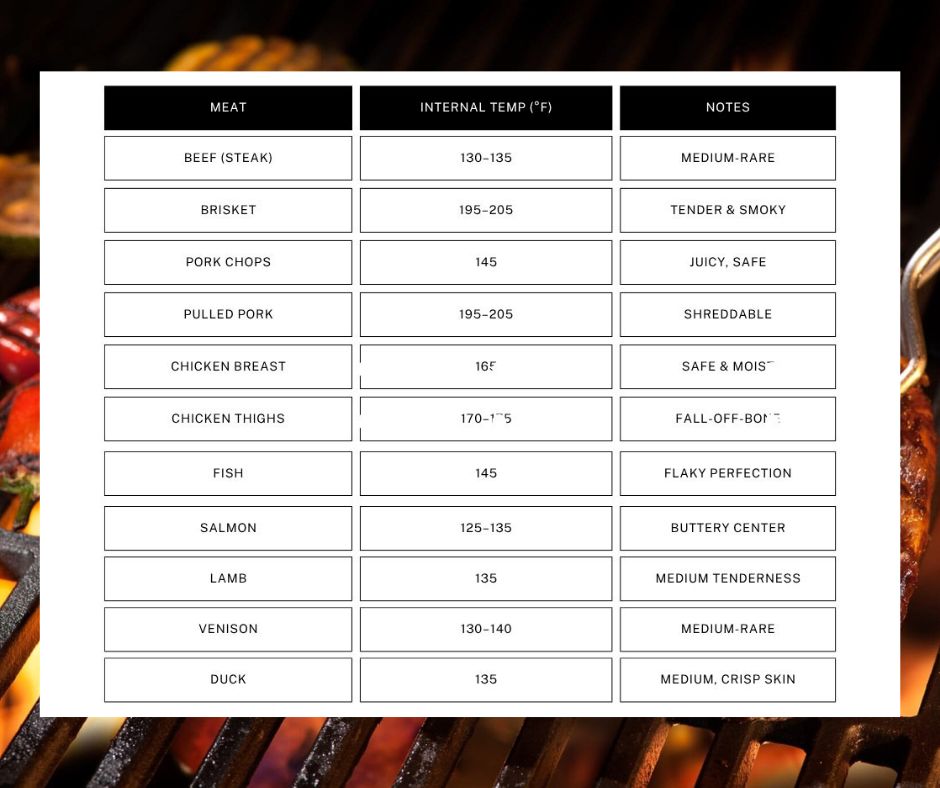You can spot a BBQ rookie from a mile away. They poke the meat, squint at it, and declare, “Looks done.” Then five minutes later – bam – raw chicken or dry steak.
Here’s the truth: great BBQ isn’t about guesswork. It’s about precision. The difference between “meh” and “mouthwatering” often comes down to a few degrees.
So, if you’ve ever asked, “How hot should my meat be?” this guide’s for you. This BBQ temperature chart breaks down the exact internal temperatures for every kind of meat – whether you’re grilling burgers, smoking brisket, or roasting a chicken.
Why Temperature Is Everything in BBQ
Think of temperature as the language meat speaks. It tells you when your food is safe, tender, and juicy.
The internal temperature determines whether collagen has broken down in brisket, whether a pork chop stays moist, or if your chicken won’t send guests running for the bathroom.
Relying on cooking time or color alone? That’s rookie stuff. Every grill runs differently. The only universal truth is what’s happening inside the meat.
A simple meat thermometer is your best BBQ tool. Use it, and you’ll instantly graduate from “guy who burns things” to “guy who gets invited to every cookout.”
Tools You Need to Nail the Right Temperature
Before you start, get your gear right. Good tools make great BBQ easier:
- Instant-read thermometer: Quick checks for steaks, burgers, and chicken.
- Probe thermometer: Leave it in during long cooks like brisket or pork shoulder.
- Grill thermometer: Because your grill’s built-in gauge lies – especially if it’s on the lid.
- Resting rack: Keeps meat from sitting in its own juices while it rests (which sounds fancy but makes a big difference).
Pro tip: Always check temperature at the thickest part of the meat, away from bone or fat pockets.
The Ultimate BBQ Temperature Chart
This is what you came for: the BBQ temperature chart every beginner needs. Print it, memorize it, or tape it to your smoker – whatever works.
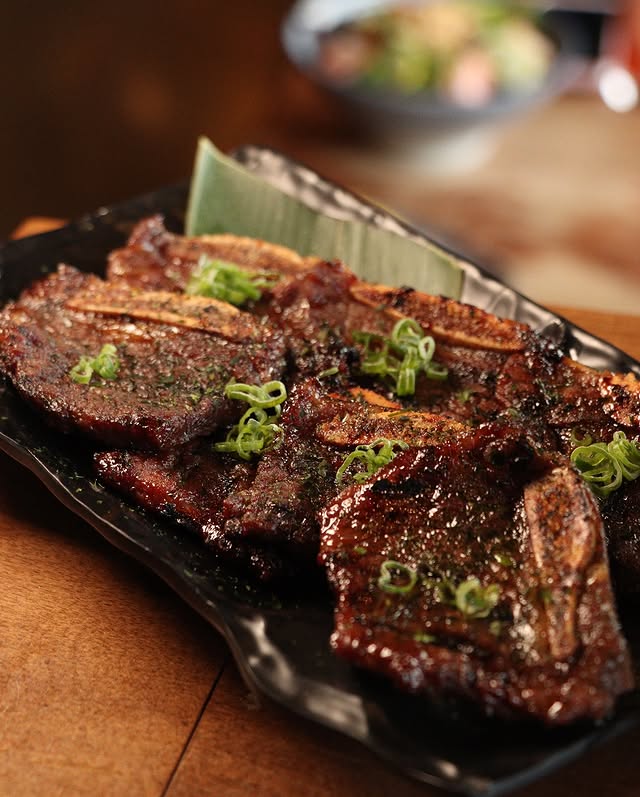
1. Beef: From Rare to Well-Done
Steaks and roasts:
- Rare: 120–125°F (Cool red center)
- Medium-rare: 130–135°F (Warm red center; juicy perfection)
- Medium: 140–145°F (Pink, slightly firm)
- Medium-well: 150–155°F
- Well-done: 160°F+ (No pink, firm texture)
If you’re after that buttery, melt-in-your-mouth steak, aim for medium-rare. It’s the sweet spot for flavor and tenderness.
Ground beef and burgers: always 160°F minimum. No exceptions. The bacteria that cause trouble live on the surface – and get mixed in when grinding.
Brisket: now that’s a whole different beast. It needs 195–205°F to break down all that connective tissue. If you pull it too early, you’ll be chewing leather. Too late, and it’ll crumble like confetti.
Pitmaster tip: Brisket doesn’t tell time – it tells temperature. Listen to it.
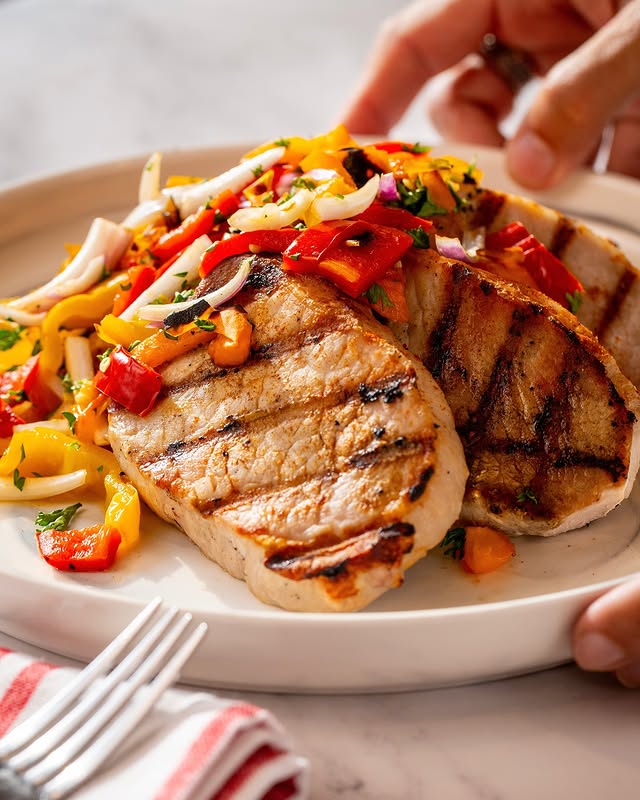
2. Pork: Juicy, Not Dry
Once upon a time, everyone cooked pork until it was dry as dust. Then the USDA realized 145°F was perfectly safe – if you let it rest.
Pork temps:
- Chops, tenderloin, and roasts: 145°F with a 3-minute rest.
- Pulled pork (shoulder or butt): 195–205°F (that’s when it shreds like a dream).
- Ribs: 190–203°F. The meat should bend and crack, not fall apart completely.
At 145°F, pork is juicy, slightly pink, and loaded with flavor. Anything higher, and you’re basically eating sawdust.
Pitmaster tip: The magic of pork is patience. Cook low and slow for tender results that don’t need sauce to save them.
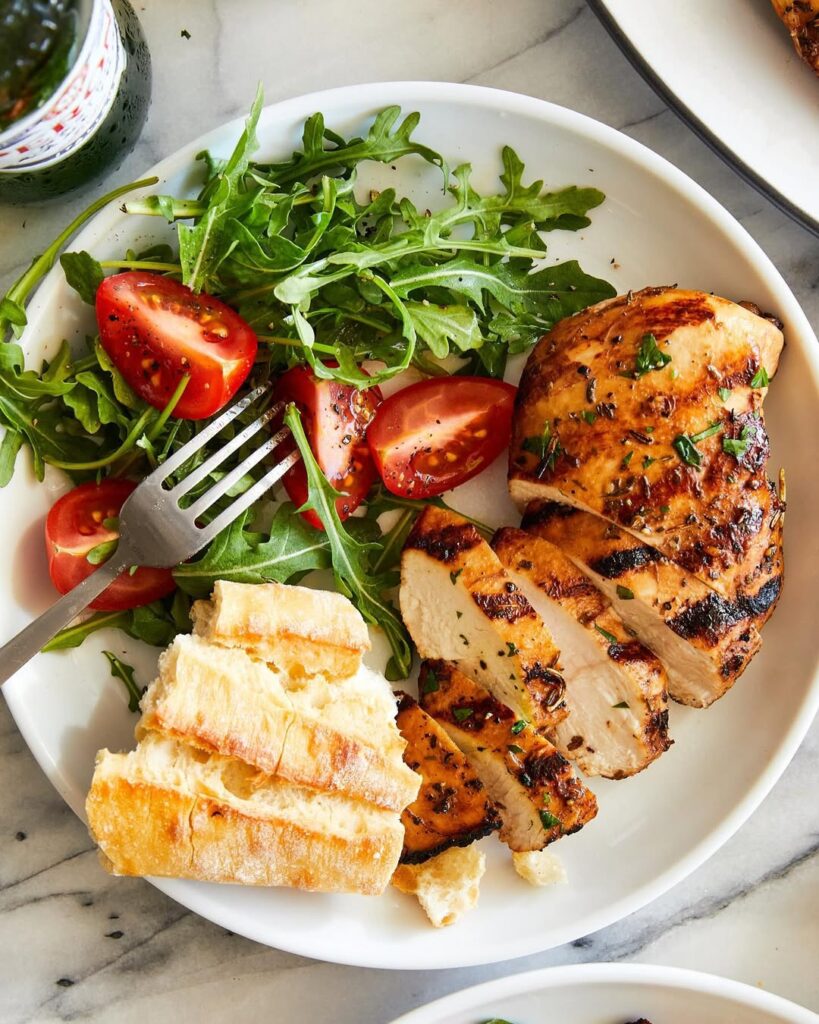
3. Chicken & Poultry: Safety First
Chicken gets a bad rap for being boring – but that’s usually because people overcook it to death.
Safe internal temps:
- Chicken breast: 165°F (no more, no less).
- Thighs or drumsticks: 170–175°F (they need a little extra to tenderize).
- Whole chicken or turkey: 165°F in the thickest part of the breast; 175°F in the thigh.
Forget color tests. Pink meat doesn’t mean unsafe – it means smoke ring or bone pigment. If it’s hit the right temp, it’s good to go.
Pitmaster tip: Let chicken rest for 5–10 minutes. It keeps those juices locked in.
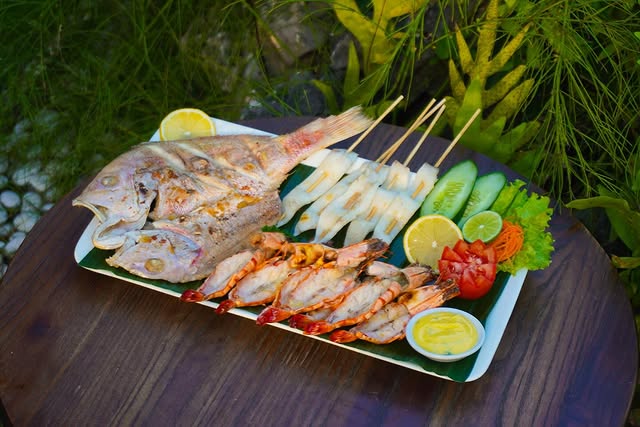
4. Fish & Seafood: Gentle and Quick
Fish is fragile. You can’t bully it like brisket – it needs finesse.
Fish temps:
Fish fillets: 145°F
- Salmon: 125°F for medium, 135°F for well-done
- Shrimp & scallops: about 120°F (or when opaque and firm)
Pitmaster tip: Oil your grates and keep fish moving. If you leave it in one spot too long, it’ll stick harder than a bad tattoo.
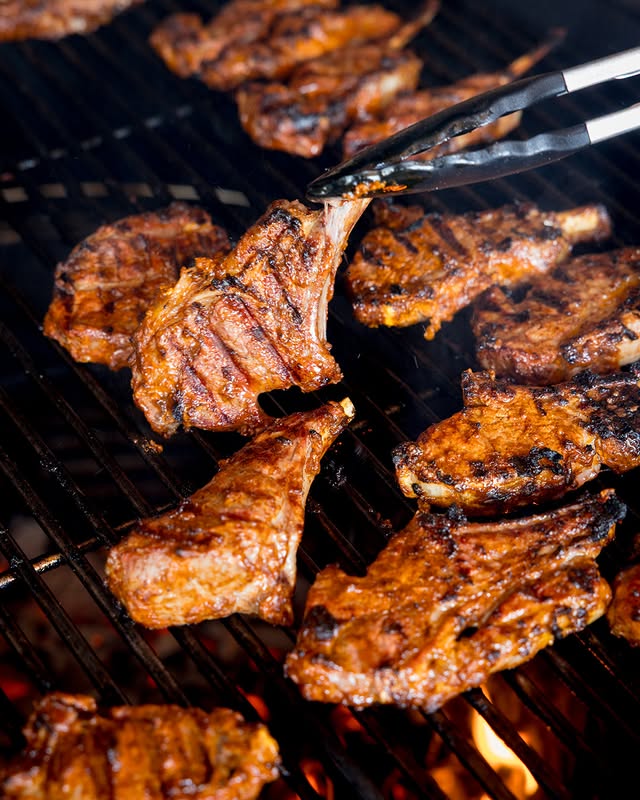
5. Lamb: Tender and Flavorful
Lamb sits somewhere between beef and pork in the BBQ world. It’s rich, juicy, and a bit fancy—so handle it with respect.
Lamb temps:
- Rare: 125°F
- Medium: 135°F
- Well-done: 160°F+
Lamb chops love a quick sear and medium center, while larger roasts should rest longer for even doneness.
Pitmaster tip: Resting time matters. Give lamb at least 10 minutes off the grill before slicing – it finishes cooking and the flavor blooms.
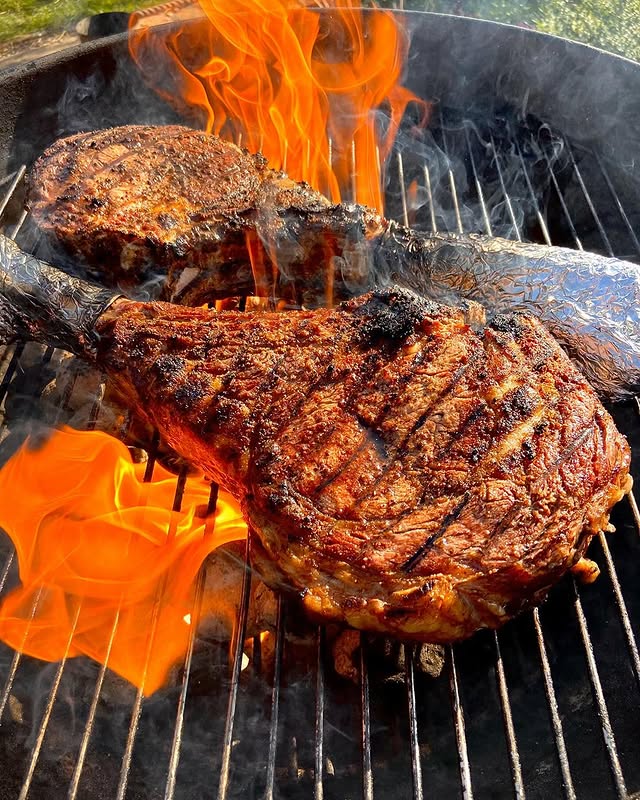
6. Game Meats: Lean and Tricky
Game meats like venison or duck are low-fat, which means they dry out fast if you overdo it.
Game temps:
- Venison: 130–140°F for medium-rare.
- Duck breast: 135°F for medium.
- Quail, pheasant, or wild turkey: 160°F to stay moist and safe.
Pitmaster tip: Wrap lean game in bacon or brush it with oil to help retain moisture. Hunters swear by it – and so do smart grillers.
Pro Tips for Hitting the Perfect Temperature
Now that you’ve got the chart, here’s how to nail it every time:
- Let meat rest. After cooking, give it 5–10 minutes. The juices redistribute, and the internal temp rises about 5°F – known as carryover cooking.
- Measure at the thickest part. Don’t touch bone or fat pockets – they throw off readings.
- Stop poking the meat. Every stab loses juice. One good reading is enough.
- Keep your thermometer clean. Nobody wants last night’s chicken flavor in today’s ribs.
Common Beginner Mistakes (and How to Fix Them)
Everyone messes up their first few BBQs. Here’s how to dodge the usual pitfalls:
- Relying on time instead of temp. Every grill and cut is different. A thermometer never lies.
- Cooking straight from the fridge. Cold meat cooks unevenly. Let it sit at room temp for 20–30 minutes first.
- Checking too soon. Opening the lid drops the heat – especially in smokers. Keep your cool (literally).
- Overcooking “for safety.” You’re not running a hospital cafeteria. Use the BBQ temperature chart and trust it.
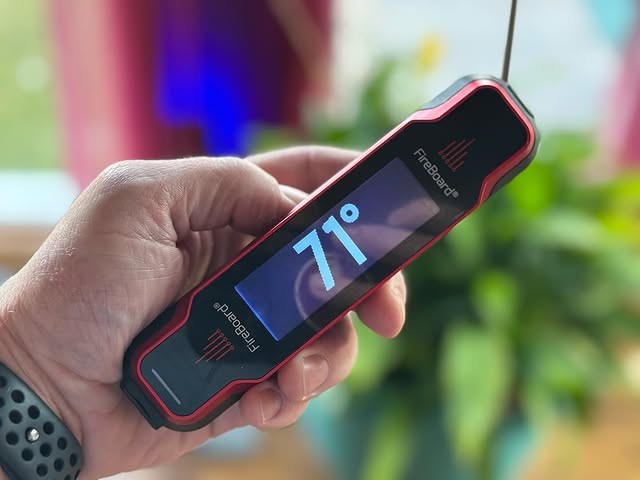
Quick Reference: Complete BBQ Temperature Chart
| Meat | Internal Temp (°F) | Notes |
| Beef (steak) | 130–135 | Medium-rare |
| Brisket | 195–205 | Tender & smoky |
| Pork chops | 145 | Juicy, safe |
| Pulled pork | 195–205 | Shreddable |
| Chicken breast | 165 | Safe & moist |
| Chicken thighs | 170–175 | Fall-off-bone |
| Fish | 145 | Flaky perfection |
| Salmon | 125–135 | Buttery center |
| Lamb | 135 | Medium tenderness |
| Venison | 130–140 | Medium-rare |
| Duck | 135 | Medium, crisp skin |
Bookmark this BBQ temperature chart or print it for your next backyard session – it’ll make you look like you’ve been smoking meats for decades.
Master Your BBQ Game
Cooking meat perfectly isn’t luck – it’s science, timing, and a little confidence. Once you learn how to read temperature, you’ll stop guessing and start impressing.
Whether it’s brisket at 203°F or salmon at 125°F, these numbers are your roadmap to BBQ greatness.
So next time someone squints at the grill and says, “Looks done,” hand them a thermometer and smile. You’ve got the chart, the know-how, and the flavor on lock.
Featured image credit: Marlon Dequito (made in Canva)

